Be prepared to meet your giving goals as the year draws to a close
October 1, 2025
Whether you give every year or are thinking about making a donation for the first time, a little planning can help your gift go further. Here are some simple tips to help you make the most of your year-end giving:
1. Consult with your tax advisors, as some rules have changed
Your advisors are a critical part of your year-end giving process, so consult with them before making any substantive year-end gift. They can help you determine how your proposed gift might affect your estimated tax liability and your existing estate plan. This is especially important in years like this where new tax legislation has been enacted.
2. Bunch your charitable gifts and make them before year end
Beginning January 1, 2026, taxpayers who itemize their deductions will only be able to deduct charitable contributions in excess of 0.5% of their adjusted gross income. For example, if a taxpayer with AGI of $100,000 makes a $10,000 charitable gift, they would only be eligible to claim a charitable deduction of $9,500 ($10,000 – (0.5% of $100,000)). If the same gift were made on December 31, 2025, the taxpayer would have been eligible to claim a charitable deduction of $10,000.
If you itemize your deductions, consider bunching your planned charitable gifts and making them by December 31, 2025, to avoid this 0.5% floor and take advantage of the higher standard deduction in 2026. Bunching involves consolidating several years’ worth of charitable contributions into a single tax year. Instead of donating annually, individuals make larger contributions in specific years with the goal of receiving an itemized deduction that is greater than the standard deduction. In non-bunching years, they may forego making charitable donations or make minimal contributions, opting to use the standard deduction instead.
If you are interested in bunching but concerned about the effect it may have on the organizations you support, a donor advised fund may meet your needs. It will allow you to take the charitable tax deduction this year while retaining the flexibility to recommend distributions to the nonprofits you wish to support over multiple years. You can find out more about establishing a donor-advised fund with MCF here.
NOTE: In addition to facing a 0.5% floor on their charitable deductions, taxpayers in the highest tax bracket will also be subject to a cap on their itemized deductions beginning in 2026. For more information on this limitation, please consult with your tax advisor.
3. Establish a charitable gift annuity to make a legacy gift while receiving income during your lifetime
Establishing a CGA allows you to make a tax-deductible legacy gift to a nonprofit of your choice (or to a fund at MCF established to benefit that nonprofit) while retaining the right to receive quarterly or annual annuity payments during your lifetime. Any amount remaining in your CGA after your lifetime will be transferred to the nonprofit or fund you selected.
(In addition to establishing CGAs benefitting specific nonprofits, you also can establish CGAs benefitting MCF’s Priority Fund, Community Impact Fund, or any of MCF’s field of interest funds.)
4. Make tax-free qualified charitable distributions from your individual retirement account
If you are 70 1/2 or older, you can receive QCD treatment for certain transfers of up to $108,000 from your IRA directly to a qualified charity (or to a qualifying fund at that charity). Transfers qualifying as QCDs are not included in your taxable income and reduce your retirement account balance, on which you and your heirs will ultimately pay tax. Furthermore, since QCDs are excluded from taxable income (as opposed to being treated as itemized deductions), future gifts of QCDs will not be subject to the 0.5% floor on charitable deductions discussed in Tip 2 above.
While contributions to a donor advised fund typically do not qualify for QCD treatment, contributions to other types of funds at MCF (for example, nonprofit endowment funds, field of interest funds, donor designated funds, MCF’s Community Impact or Priority funds) may qualify.
NOTE: Before making a transfer from your IRA to a qualified charity, be sure to confirm with your advisor that the transfer meets the requirements to be treated as a QCD. Certain transfers, such as those from an ongoing SEP or SIMPLE IRA, typically do not qualify as QCDs.
5. Use a qualified charitable distribution to create a charitable gift annuity
The SECURE 2.0 Act allows taxpayers to make a one-time transfer of up to $54,000 in QCDs to a charitable gift annuity. Take advantage of this new opportunity to create a charitable gift annuity benefiting a nonprofit (or fund) of your choice.
NOTE: Charitable gift annuities created using QCDs receive different tax treatment than those funded with other assets. If you are considering this option, please make sure to consult with your tax advisor.
6. Make gifts of appreciated securities
If you have stocks or other securities that are worth more than you paid for them, and you’ve owned them for at least 12 months, consider giving those to charity. Doing so may allow you to avoid capital gains tax and take a charitable deduction for the securities’ full fair market value. Your deduction for donations of appreciated stock or securities to public charities is limited to 30% of your AGI each year, but you can carry over any excess deductions for up to five additional years.
NOTE: Since gifts of appreciated securities can take some time to process, you will want to coordinate the gift with the recipient organization as soon as possible to ensure the transfer of these securities can be completed by year end.
7. Learn about the organizations doing the type of work you’d like to support
If you have an area of interest or ideas about a specific organization you’d like to support, MCF’s Greater Madison Nonprofit Directory can help. It provides a comprehensive online guide to charitable organizations in our region. You can sort broadly by area of interest, organization size or location. You also can use it to learn more about a specific organization’s financial health, programs, operations and impact.
8. Be aware of the year-end giving deadlines
If you do choose to make a gift before year end, timing is important. Gifts sent by U.S. Mail must be postmarked by December 31, while gifts sent by private couriers (for example, FedEx) must be received by December 31. Additionally, credit card gifts must reflect a December 31 or prior transaction date on your statement.
Transfers of Stock and Mutual Fund Shares
To allow adequate time to process transfers of mutual fund shares, MCF recommends that you initiate these transfers by Monday, December 1. We also recommend that you initiate any transfers of publicly traded stock by Monday, December 8. If you are interested in making a gift of closely held stock, please contact MCF for more information on the timeline and process for transferring that stock.
Grant Recommendations from Existing Funds
If you would like to recommend a grant from your fund by year-end, we encourage you to submit your request as soon as possible. The deadline to submit grant requests for processing in 2025 is Monday, December 15.
9. If you need any information, or have any questions, about the options available for giving at MCF, contact us!
Working with a philanthropic advisor at MCF gives you access to our knowledge of the local nonprofit community and opportunities to make a difference in ways that matter to you. We can also help you and your advisor think strategically about the tools you can use to make gifts during your lifetime or through your estate. Please contact our Donor Engagement Team at 608-232-1763, or by email at legacy@madisongives.org, for more information.
This material has been provided for informational purposes only, and is not intended to provide, and should not be relied on for tax, legal or accounting advice. The information included was accurate when we published the blog. Check with your tax advisor before making any gifts to ensure you are aware of any changes that may have occurred after this blog was published.


